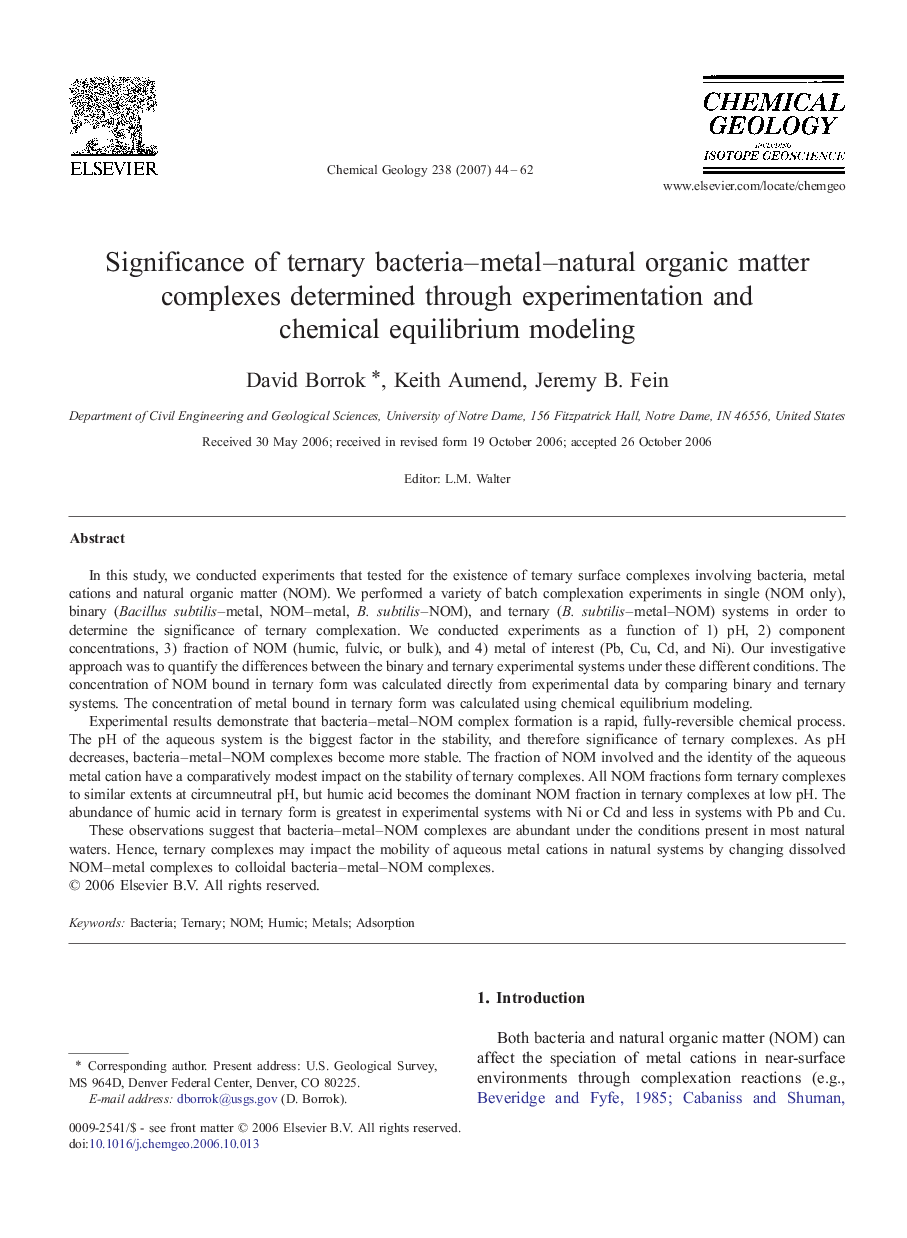| Article ID | Journal | Published Year | Pages | File Type |
|---|---|---|---|---|
| 4701037 | Chemical Geology | 2007 | 19 Pages |
In this study, we conducted experiments that tested for the existence of ternary surface complexes involving bacteria, metal cations and natural organic matter (NOM). We performed a variety of batch complexation experiments in single (NOM only), binary (Bacillus subtilis–metal, NOM–metal, B. subtilis–NOM), and ternary (B. subtilis–metal–NOM) systems in order to determine the significance of ternary complexation. We conducted experiments as a function of 1) pH, 2) component concentrations, 3) fraction of NOM (humic, fulvic, or bulk), and 4) metal of interest (Pb, Cu, Cd, and Ni). Our investigative approach was to quantify the differences between the binary and ternary experimental systems under these different conditions. The concentration of NOM bound in ternary form was calculated directly from experimental data by comparing binary and ternary systems. The concentration of metal bound in ternary form was calculated using chemical equilibrium modeling.Experimental results demonstrate that bacteria–metal–NOM complex formation is a rapid, fully-reversible chemical process. The pH of the aqueous system is the biggest factor in the stability, and therefore significance of ternary complexes. As pH decreases, bacteria–metal–NOM complexes become more stable. The fraction of NOM involved and the identity of the aqueous metal cation have a comparatively modest impact on the stability of ternary complexes. All NOM fractions form ternary complexes to similar extents at circumneutral pH, but humic acid becomes the dominant NOM fraction in ternary complexes at low pH. The abundance of humic acid in ternary form is greatest in experimental systems with Ni or Cd and less in systems with Pb and Cu.These observations suggest that bacteria–metal–NOM complexes are abundant under the conditions present in most natural waters. Hence, ternary complexes may impact the mobility of aqueous metal cations in natural systems by changing dissolved NOM–metal complexes to colloidal bacteria–metal–NOM complexes.
